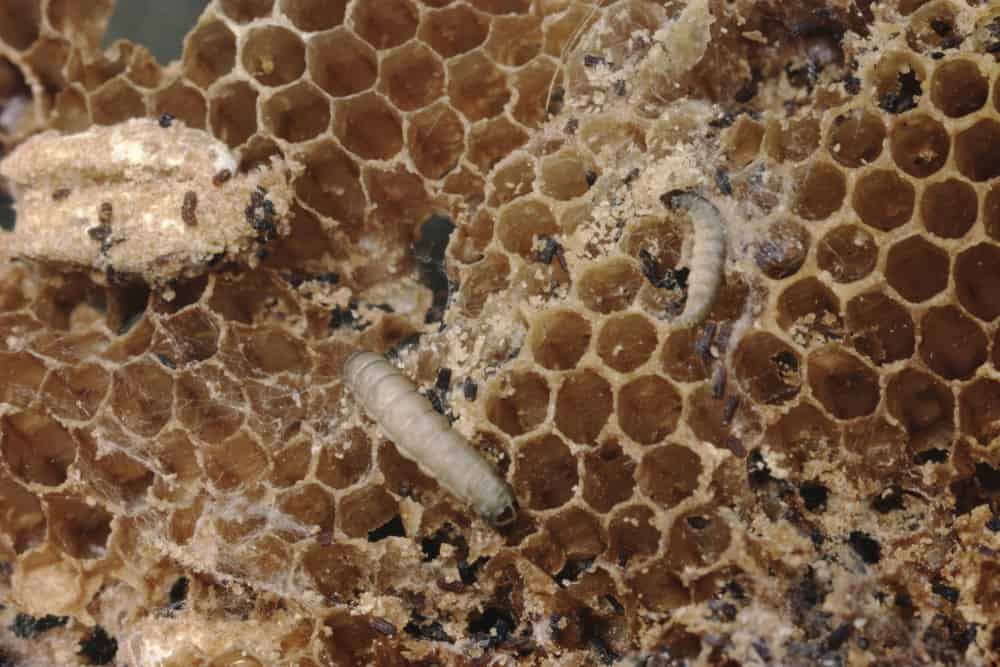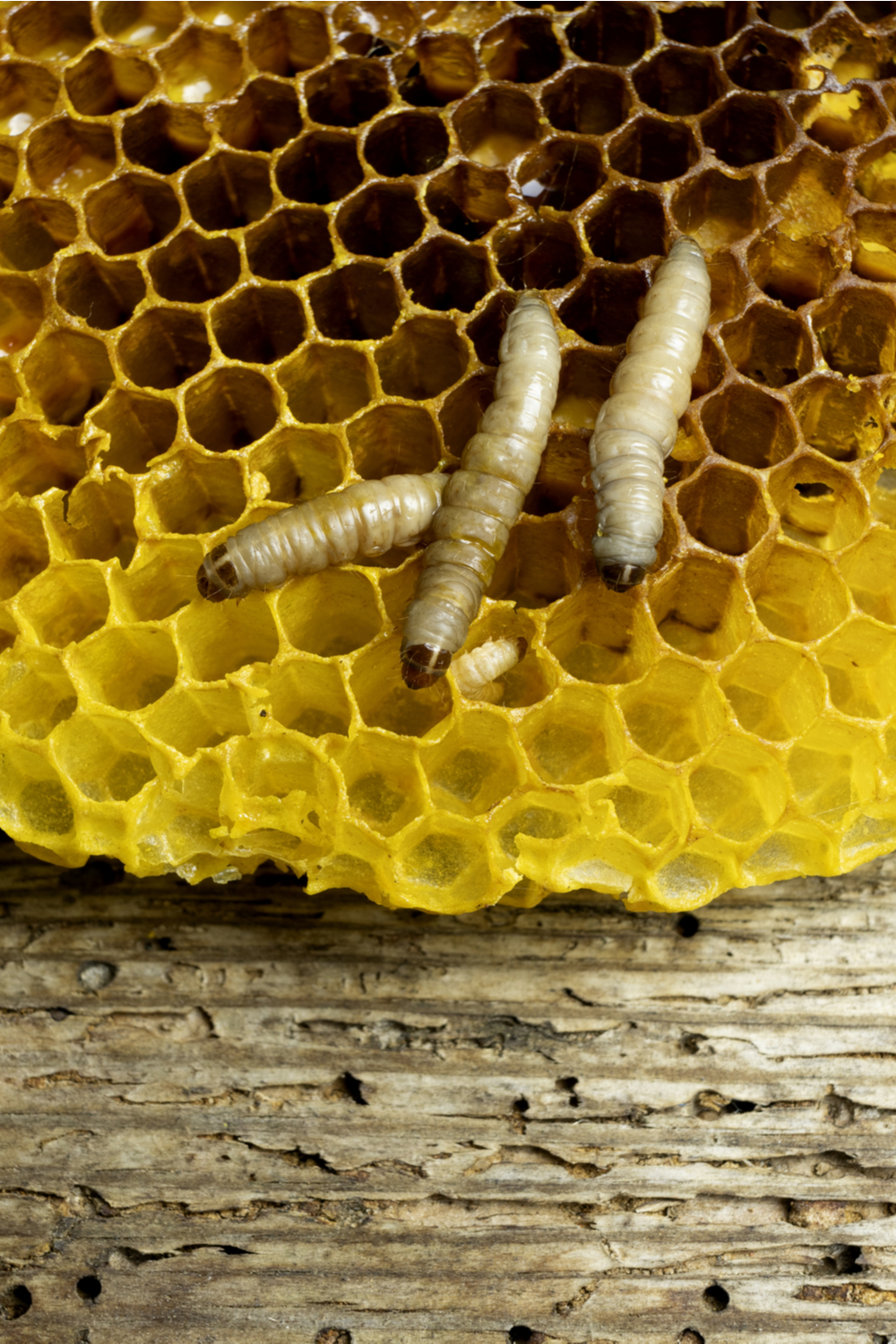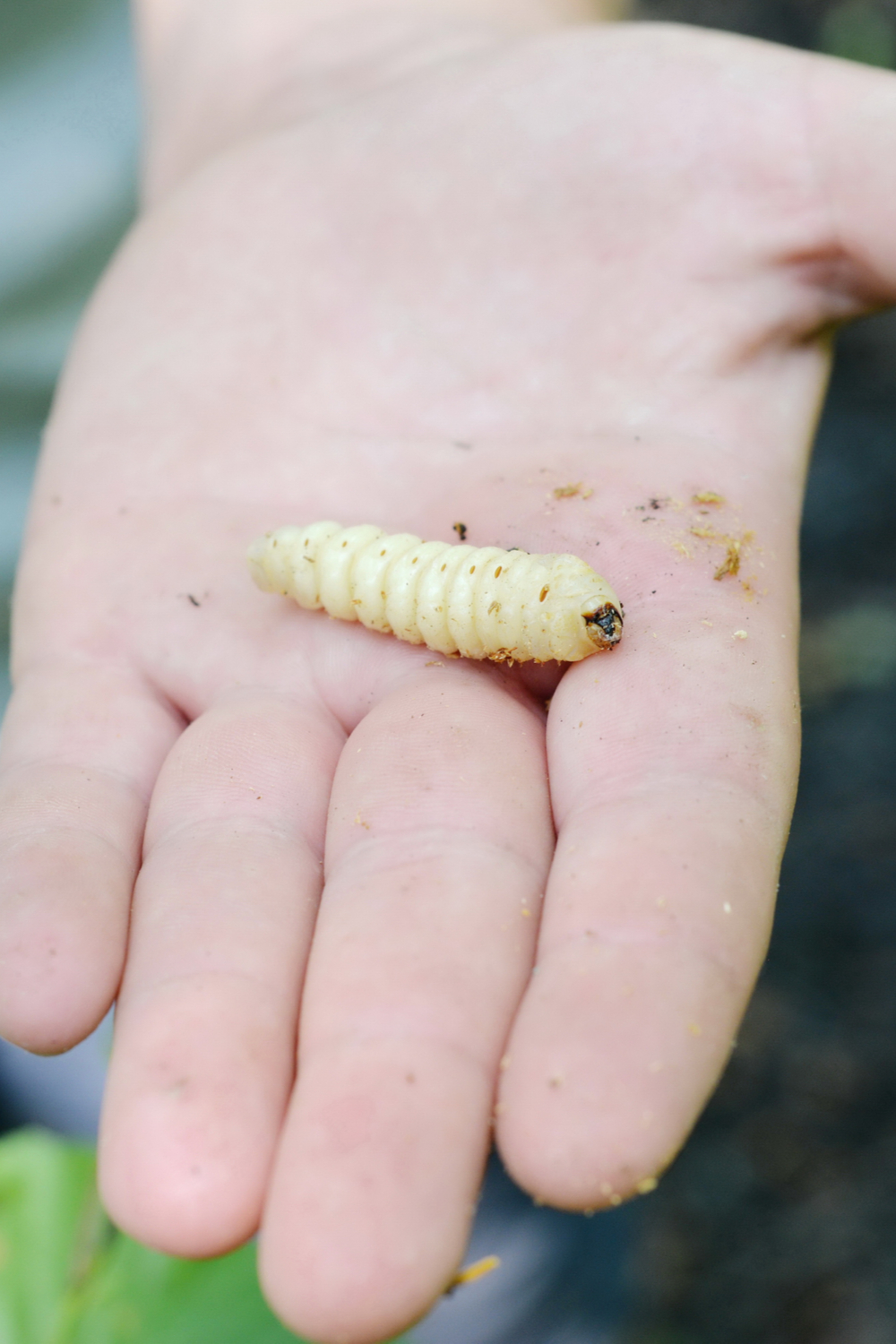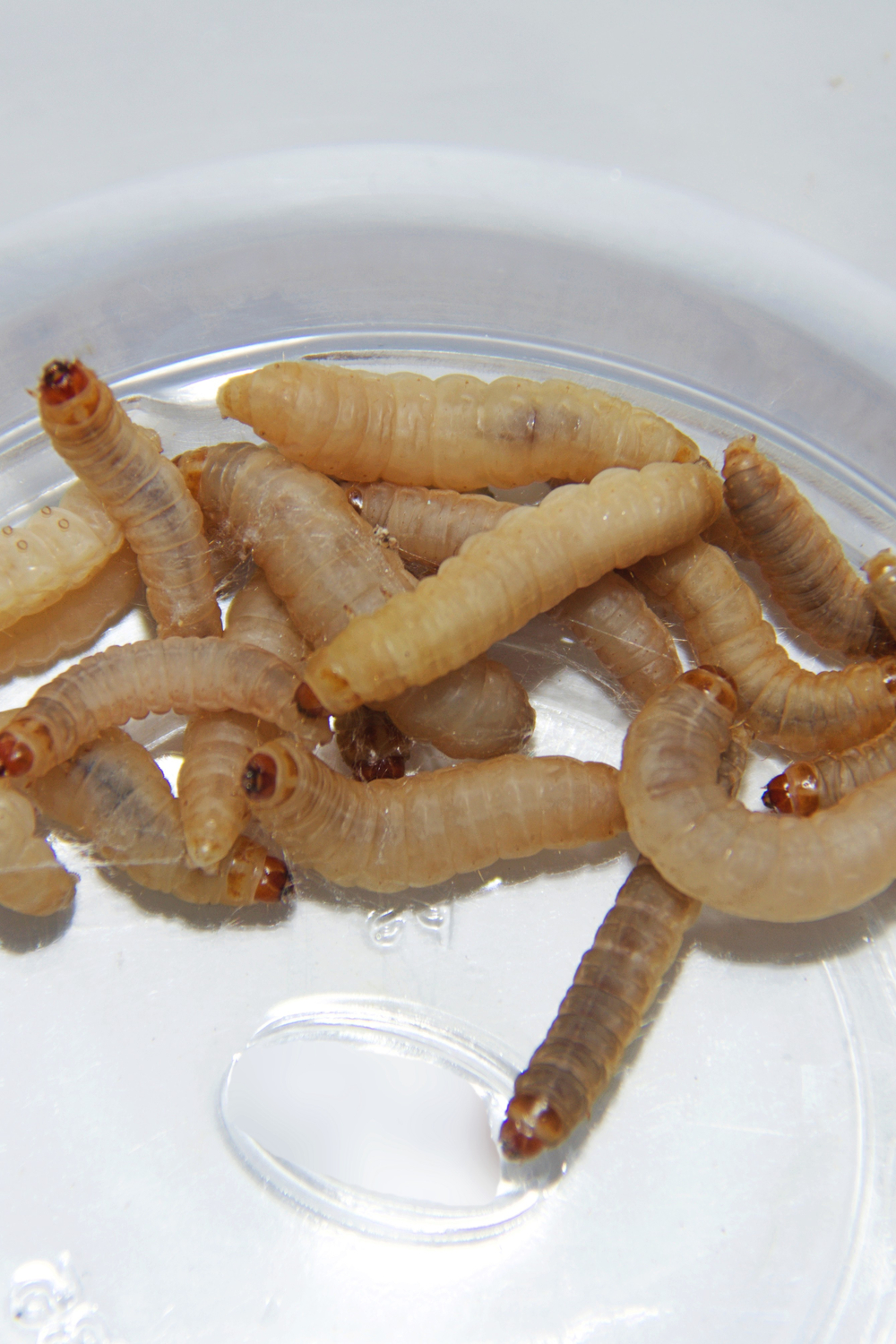Do you ever think of what wax worms eat to survive? If they ever affect you, how will you get rid of them?
Well, if you are looking for the answers, this should be your stop. We’ll talk about what wax worms eat, their harm, and how to get rid of them.
So, let’s get it rolling. We shall start with the foods wax worms like to eat.
What Wax Worms like to Eat
Like their name, these are pests that eat the bees’ wax and their honey. But there’s more to it. Waxworms have different ways of eating and things they eat besides the wax.
The way they feed is unique from other pests on your far. It’s because they are part of a life cycle of wax moths. Read on to see wax worm’s eating habits.
Eating Habits
In most cases, wax worms will live and eat in a beehive that gets less care. Also, they’ll eat and grow in parts of the comb with fewer bees.
So, the wax moths will lay the eggs in the warm conditions of the hive. After that, these wax worms will hatch in three days. Under the same warm temperature, it will be comfortable for the worms to eat the bee wax and honey.
Yes, they eat the wax and honey to grow. But these worms eat the wooden parts of the beehive to make way for them to move.
Also, to get their food, these pests like old and dark combs. These combs are the ones that have the baby bees and the pollen that workings bees collect.
Remember, with these combs, wax worms will get near to their food place. They’ll eat the young bees, wax, and pollen. Also, it’s where the worms get food with many nutrients.
The Foods Wax Worms Eat
These wax worms that are pests to bees don’t have a broad diet. But what they eat keeps bringing losses to you and your bees.
So below are the foods they eat and how it benefits them. Please take a look.
- Waxworms love wax from the beehive. It helps them make way and space for them to live. Also, beehive wax helps these worms to grow and mature faster to wax moths.
- These wax worms play a big role in making their body grow. Since it’s a polymer, wax has many carbons. Together, these carbons make the worms strong.
- Also, wax worms eat honey from bees. Honey has many nutrients like vitamins which make them grow faster. Vitamins help these worms’ bodies adapt to many places.
- Honey has many minerals. It gives the wax worms calcium, potassium, and phosphorus, among others. These minerals help them make the fluids inside the body of worms.
- Waxworms get energy from eating raw honey. It’s because honey has many sugars. So, even when the worms mature into wax moths, they’ll be strong.
- Remember, honey also has many other bee waxes, pollens, and other dead bees. So, it’s a collection of many things that help the wax worms grow fast.
- The waxworms can also eat baby bees. Since they are young and growing, the worm can attack them with much ease.
- These young bees have many proteins. It’s what helps the worms repair the parts that they get damage.
- Waxworms eat remains of the larval cocoons and wastes of the bees. These elements are always present in the cells. It’s from here that they also get proteins to make their bodies look better.
The harm of Wax Worms
As the worms keep eating from the wax and cells of the beehive, they bring many problems. These worms will keep spreading problems using colonies.
But what are these terrible things that they can do to you? Please take a look at them.
- Waxworms will destroy your beehive. They are very dangerous. Remember, the level of damage depends on how much the worms have attacked the hive.
- They do this act by eating the wooden honeycombs. It’s to help them feed. Also, these worms eat the combs to make way for themselves in the combs.
- There will be bad honey bee pupae. It comes when these honey bees get exposed. This state is called the bald brood.
- The wax worms will eat the honeycomb caps. After that, the worker bees will eat up the remains of the capping. Also, the lines of the bald follow what the worm makes after eating the wax.
- With less protection, the honey bee pupae close to being mature won’t have a proper body. It comes from them having the wastes from worms and moths. Remembers, it’s before the honey bees come out from the cells.
- These wax worms also make silk threads in the cells. So, the new adult bees will fail to come out of the cells.
- Later on, the bees will die, and the hive bees will remove them. Though, it’s a pretty rare problem.
- Waxworms destroy the pollen collected by worker bees. They eat fresh and dried ones. So, when you harvest the honey, these pollens won’t be safe to eat.
- They’ll reduce the quality and taste of the honey. Remember, the worms come after hatching.
- The worms will form webs on the honey, eat it, and release wastes. It’s these process that makes the comb honey have less value.
- If you’d even want a clean quality bee wax, choose the one with no or zero wax worm’s attack. But if it has harm from these worms, it will be dirty and with less refinement.
Tips to Getting Rid of Wax Worms
Are you tired of wax worms destroying your hives and honey? Don’t worry. So, here’s what to do to remove these worms from your beehive, wax, or honey.
- Pick on the hives that have many effects coming from these worms. This act will come because of the wax worms that you can see with much ease.
- Remember, these worms are white with a touch of brown. Their heads are round.
- You’ll see the infestation if there are holes in the wax. Also, there will be dark waste matter on the wax. It shows that the wax worms are present.
- After checking to see the larvae, you can manually remove them. It’s the best and simplest way you’d ever use. If you find and remove these worms, they will release their effects.
- You can use chemicals to remove these pests. Pick one that won’t affect the combs.
- So, you’ll spray it over the beehive. If you do the act well, the chemical you’ll use will protect the combs from these wax worms.
- Prevention is better than cure. The wax worms love dark bee hives that get less care. So, ensure that the beehive or colony is strong and healthy.
- A clean beehive has many honey bees. It helps them have the strength to know wax worm and remove it from the hive.
- So, as a farmer, if you keep your hive big in number, there will be fewer wax worms. It should start by the pack having a laying queen with good specs. This queen will help control the population.
- Remember, bees are also wise. They’ll connect with a clean beekeeper.
- Also, cleaning and maintaining the wax prevents the attack from the pests. It works well with the combs you store. But, for this method to be successful, it will depend on the winter temperature.
- It would help if you froze the wax worms. Every bit of the life cycle of a wax moth can stop through freezing. Buy a small fridge to place the combs you take after harvesting honey.
- Also, you can keep the combs in temperatures of as low as 4℃. If you reach the correct temperatures, treat the wax combs.
- After freezing the combs, treat them well. Through the treatment, the wax worms won’t have a chance to affect the combs again.
- You can remove these worms by placing honey under cold temperatures. But this method won’t work for all types of honey. It’s because the honey can turn to candy.
- Also, after freezing the honey, treat it. All the wax worms in them will go away. Remember, you should freeze the honey between 24 to 48 hours to get excellent results.
- Genetics can also help you. Some bees have the trait to resist any diseases and pests. Also, these bees can tolerate primary problems that affect bees, like the entry of wax moths that lead to wax worms.
- You can also pick bees that are a hygiene trait. They’ll help in managing the hive well.
- Also, such bees help remove any bee waste. Remember, it’s through these bees’ feces that these wax worms thrive. But without the excreta, the worms will die.
- Keep the harvested honey and wax in areas with less light and with enough air. It will reduce an attack by wax worms that come after wax moths lay eggs.
- As for the combs with zero or less honey, use heat treatment. It can be in 46 (for 80 minutes) or 49℃ (for 40 minutes). It will remove any presence of these worms.
Conclusion
Waxworms are part of the life cycle of wax moths. What they eat ends up affecting the hive, bees, and honey.
The effects of these wax worms aren’t lovely. Your wax, combs, and honey will have poor quality. But getting rid of these worms will help make the beehive and colony better.
Do you have any questions or thoughts about wax worm pests? Please feel free to share with us.



